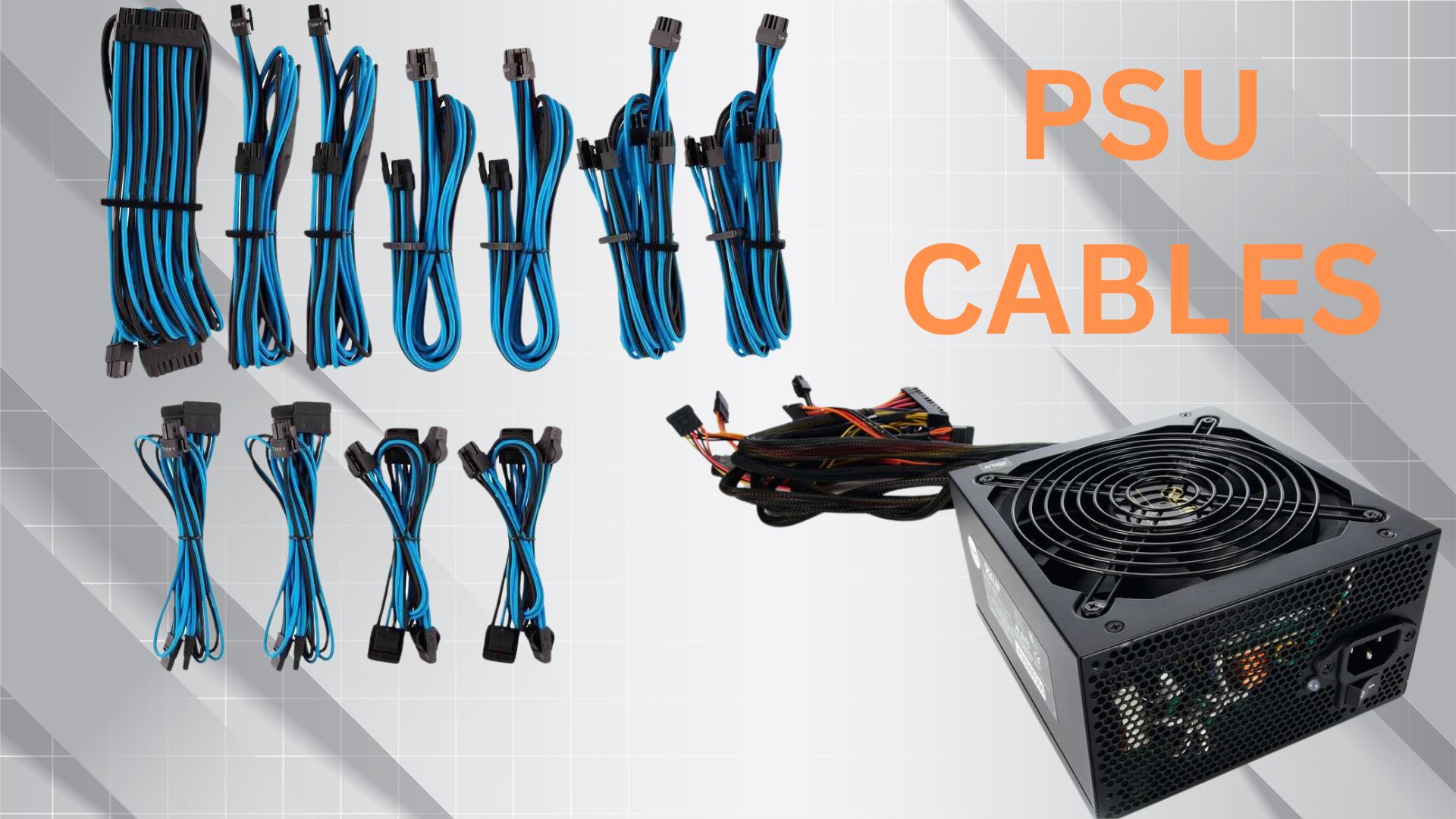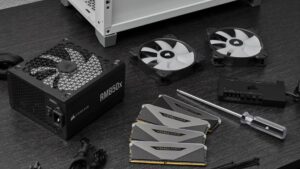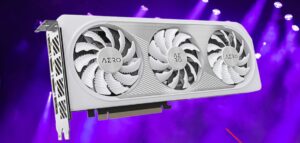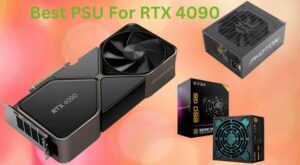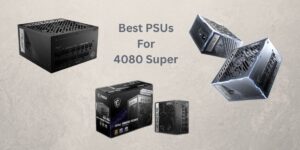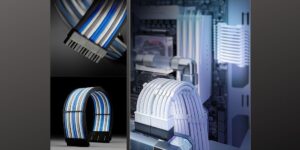Which PSU Cables Do I Need?
When embarking on a PC build or upgrade, one of the critical considerations is selecting the appropriate power supply unit (PSU) cables. The right cables are essential for powering and connecting various components within your system, ensuring optimal performance and functionality. With a multitude of PSU cables available, navigating through the options can be daunting. In this comprehensive guide, we delve into the world of PSU cables, exploring which PSU cables do I need?, their different types, their functions, and compatibility requirements, and offering valuable insights on how to choose the right cables for your specific PC build. Understanding the significance of each cable type and its role in powering and connecting components will empower you to make informed decisions and create a well-functioning and efficient PC setup tailored to your needs.
The Crucial Role of PSU Cables
PSU (Power Supply Unit) cables are critical in connecting the power supply to various components within a computer system. These cables transmit electrical power from the PSU to components such as the motherboard, GPU, CPU, storage drives, and peripherals. Different cables, including 24-pin ATX, SATA, PCIe, and CPU power cables, ensure compatibility and efficient power distribution. Properly routed and connected cables provide stable power delivery, preventing electrical issues and system instability. Additionally, cable management improves airflow within the system, reducing heat buildup and enhancing the overall performance and longevity of the components.
Also, Check Out.
6 Best GPUs for Optimal Plex Server Performance
Clearing the Cable Confusion:
With many cables at your disposal, it’s easy to get confused. Which cables are necessary? Can you use any cable with any component? To help you navigate this web of wires, we’ll break down the types of PSU cables, explain their purposes, and offer tips on managing them effectively.
Types of PSU Cables:
Before we delve into the specifics of matching cables to components, let’s understand the types of PSU cables you’ll likely encounter in your PC build.
1. 24-Pin ATX Power Connector:
The 24-pin ATX power connector is a primary cable that connects the power supply unit (PSU) to the motherboard in desktop computers. It supplies power to the motherboard, enabling it to distribute power to other components.
2. 8-Pin CPU Power Connector:
The 8-pin CPU power connector is essential for providing power from the power supply unit (PSU) directly to the CPU on the motherboard in desktop computers. It ensures stable and sufficient power delivery to the CPU for optimal performance.
3. PCIe Cables:
PCIe cables connect graphics cards and other expansion cards to the power supply unit (PSU) in desktop computers. These cables deliver supplementary power to PCIe devices, ensuring they receive adequate power for operation.
4. SATA Cables:
SATA cables connect storage devices such as hard drives, solid-state drives (SSDs), and optical drives to the motherboard or a computer storage controller. They facilitate data transfer and power delivery to the connected devices.
5. Molex Cables:
Molex cables connect peripherals like fans, case lighting, and older storage drives to the power supply unit (PSU) in desktop computers. They provide power to these components using standard Molex connectors.
6. EPS Power Cable:
This cable connects the PSU to the motherboard and provides power to the CPU, memory, and other components. It typically includes two connectors: a 4-pin CPU power connector and a 24-pin motherboard power connector.
7. FAN Power Cable:
This cable connects the PSU to fans and other cooling components. It typically includes multiple fan power connectors.
Functions of PSU Cables:
PSU (Power Supply Unit) cables serve several essential functions in a computer system:
1. Power Distribution:
- The primary function of PSU cables is to distribute power from the power supply unit to various components within the computer system. This includes the motherboard, graphics card, hard drives, SSDs, fans, and other peripherals.
2. Voltage Regulation:
- PSU cables regulate the voltage supplied to each component to ensure they receive the appropriate amount of power. Different components may require different voltages, and the PSU cables help in delivering the correct voltage to each component.
3. Data Transmission:
- Some PSU cables, such as SATA cables, also facilitate data transmission in addition to power delivery. SATA cables connect storage drives like HDDs (Hard Disk Drives) and SSDs (Solid State Drives) to the motherboard, allowing for data transfer between the storage devices and the rest of the system.
4. Cable Management:
- PSU cables play a role in cable management within the computer case. They come in various lengths and configurations to accommodate different case designs and component layouts. Proper cable management ensures efficient airflow within the case and helps in maintaining a neat and organized interior, which can aid in cooling and maintenance.
5. Modularity and Customization:
- Modular PSU cables offer the flexibility to connect only the necessary cables required for the components installed in the system. This reduces cable clutter and improves airflow within the case. Additionally, some users opt for custom PSU cables with different colours or sleeves for aesthetic purposes.
Matching Cables to Components:
Now that you know the types of cables, let’s explore how to match them to specific components in your PC.
- The Motherboard: Your motherboard requires the 24-pin ATX power connector. This cable is non-negotiable, as it powers the core components.
- Graphics Card: Most modern GPUs require one or more PCIe cables. High-end GPUs may need multiple PCIe cables to meet their power demands.
- Storage Drives: SATA cables are used to connect storage drives to the PSU. Make sure you have enough SATA power connectors for your drives.
- Other Peripherals: Molex cables are less standard today but may still be needed for older peripherals. Check your devices and see if they require Molex connections.
Compatibility:
- ATX Power Cable Compatibility: Ensure the PSU and motherboard are compatible with the ATX power cable. Check the motherboard manual or manufacturer’s website for compatibility information.
- EPS Power Cable Compatibility: Ensure the PSU and motherboard are compatible with the EPS power cable. Check the motherboard manual or manufacturer’s website for compatibility information.
- SATA Power Cable Compatibility: Ensure the PSU and peripherals are compatible with the SATA power cable. Check the peripheral manual or manufacturer’s website for compatibility information.
- PCIe Power Cable Compatibility: Ensure the PSU and peripherals are compatible with the PCIe power cable. Check the peripheral manual or manufacturer’s website for compatibility information.
- FAN Power Cable Compatibility: Ensure the PSU and fans are compatible with the FAN power cable. Check the fan manual or manufacturer’s website for compatibility information.
Cable Management Tips:
When it comes to managing PSU cables for your PC setup, following these tips can help you achieve a clean and organized workspace:
1: Start With Your Case: A good case with routing channels and velcro cable straps can make a significant difference in cable management. Ensure your case has enough space for cables and features that aid in routing and securing them.
2: Use Flat Cables: Flat cables are easier to route and manage, reducing bulkiness and making your setup look cleaner.
3: Use a Modular Power Supply: Modular power supplies allow you to connect only the cables you need, reducing clutter and improving airflow within the case.
4: Connect Cables to the Power Supply First: Connect cables to the power supply unit before routing them to components to ensure a neater and more organized setup.
5: Make Sure You Have the Right Length: Using cables of the appropriate length helps minimize excess slack and keeps your setup looking tidy.
6: Plan Your Cable Routing: Plan out the routing paths before connecting cables to ensure a clean and efficient layout. Consider where power strips, wire boxes, and trays will be placed to accommodate all necessary cables.
7: Consider Your Working Style: Choose cable management solutions that align with your working style. Opt for more permanent cable management solutions like cable hooks or adhesive strips for a permanent setup. For a more flexible setup, use solutions that allow for easy cable adjustments.
8: Explore Cable Management Products: Utilize cable management products like cord holders, cable sleeves, adjustable cable straps, cable raceways, and cable clips to keep cables organized and secure.
Cable Extensions and Custom Cables:
Cable Extensions:
- Custom Cable Extensions: Custom cable extensions are designed to extend the length of existing cables, allowing for more flexibility in cable management and aesthetics.
- DIY Cable Extensions: DIY cable extensions can be made using various materials and tools, such as 16 gauge wire, connectors, and sleeving materials.
- Cable Extension Kits: Cable extension kits are available for purchase, offering pre-made cable extensions with various connectors and lengths.
- Cable Management: Cable extensions can be used to manage cables more effectively, reducing clutter and improving airflow within the case.
Custom Cables:
- Custom Cable Sleeving: Custom cable sleeving involves wrapping cables with materials like pet or paracord to create a unique aesthetic.
- Custom Cable Extensions vs. Full-Length Cables: Custom cable extensions are less risky than full-length cables because they do not require matching the stock pin out of the original cables.
- Cable Extension Materials: Cable extensions can be made using various materials, including 16 gauge wire, connectors, and sleeving materials.
- Cable Extension Length: Cable extensions can be made in various lengths to accommodate different PC builds and cable management needs.
Mixing Cable Extensions:
- Mixing Cable Extensions: It is generally not recommended to mix cable extensions from different manufacturers, as this can lead to compatibility issues and potential damage to components.
- Cable Extension Compatibility: Cable extensions should be compatible with the components they are connecting, ensuring proper power delivery and data transfer.
Tips for Selecting the Right PSU Cables:
1: Check the PSU Manual: Consult the PSU manual or manufacturer’s website for information on the types of cables included and their compatibility.
2: Check the Motherboard Manual: Consult the motherboard manual or manufacturer’s website for information on the types of cables required and their compatibility.
3: Check the Peripheral Manual: Consult the peripheral manual or manufacturer’s website for information on the types of cables required and their compatibility.
4: Consider the Type of Components: Determine the type of components you are using in your PC build and select the appropriate cables accordingly.
5: Consider the Length of the Cables: Ensure the cables are long enough to reach from the PSU to the components without any obstructions.
6: Consider the Quality of the Cables: Choose high-quality cables that are durable and reliable to ensure optimal performance and longevity.
New Trends in PSU Cables:
Here are some of the latest trends in power supply unit (PSU) cables:
1. Integrated Power Delivery:
- There is a growing trend towards integrating power delivery components directly onto the motherboard or GPU, eliminating the need for separate cables. For example, Asus showcased a custom RTX 4070 GPU that plugs directly into a header on the motherboard, with the power cable hidden on the back of the board. This results in a much cleaner interior by reducing visible cables.
2. Modular and Sleeved Cables:
- Modular power supplies that only include the cables needed for a specific build are becoming more popular. This reduces cable clutter by eliminating unused cables. Many PSU cables also now come pre-sleeved in various colours and patterns to enhance the aesthetics of the build.
3. Cable Management Accessories:
A variety of cable management accessories are available to help route and conceal cables, such as:
- Cable sleeves and raceways.
- Cable combs to keep cables organized.
- Velcro straps and adhesive hooks for flexible routing.
These accessories make it easier to achieve a clean, tidy interior.
4. Efficiency and Miniaturization:
- As electronics become more power-hungry, especially for AI applications, there is a need for highly efficient power delivery. Advancements in power supply devices are enabling miniaturization and integration directly onto chips to improve efficiency.
5. Ecosystem Connectivity:
- Some companies are developing ecosystems of power supply, cooling and lighting accessories that can be daisy-chained together with a single cable for power and data. For example, Corsair’s iCue Link allows connecting multiple AIO coolers and lighting components along one cable.
Conclusion
In conclusion, choosing the right PSU cables and managing them effectively can greatly impact your PC’s performance and aesthetics. The trends in power supply unit (PSU) cables are evolving towards more integrated, efficient, and aesthetically pleasing solutions. The integration of power delivery components onto motherboards and GPUs, along with modular and sleeved cables, is reducing cable clutter and enhancing the visual appeal of PC builds. Cable management accessories are becoming more sophisticated, offering users a variety of options to route and conceal cables effectively. Efficiency and miniaturization are driving advancements in power supply devices, catering to the increasing power demands of modern electronics. Additionally, the trend towards ecosystem connectivity is simplifying cable management by allowing multiple components to be daisy-chained together with a single cable. These trends collectively reflect a shift towards cleaner, more efficient, and seamlessly integrated power delivery solutions in the realm of PSU cables.
People Also Ask
a. Can I use any PSU cable with any component?
- While some cables may look similar, using the wrong cable can lead to damage or malfunctions. Using the wires that came with your PSU or verified compatible replacements is crucial.
b. What if I lose or damage a cable?
- Contact the manufacturer or a trusted retailer for a replacement cable that matches your PSU’s specifications.
c. Are custom PSU cables worth the investment?
- Custom cables can significantly enhance the aesthetics of your build. If aesthetics are a priority for you, custom cables can be a worthwhile investment.
d. What’s the difference between sleeved and unsleeved cables?
- Sleeved cables have a fabric or plastic sleeve that covers the wires, giving them a cleaner appearance and better protection. Unsleeved cables are the exposed wires without a covering.
e. Can I daisy-chain SATA power cables for multiple drives?
- It’s generally not recommended to daisy-chain SATA power cables for multiple drives. Each drive should have a dedicated power cable to ensure consistent power delivery and prevent a single cable overload.
Last Updated on 1 February 2025 by Ansa Imran

Ansa Imran, a writer, excels in creating insightful content about technology and gaming. Her articles, known for their clarity and depth, help demystify complex tech topics for a broad audience. Ansa’s work showcases her passion for the latest tech trends and her ability to engage readers with informative, well-researched pieces.

